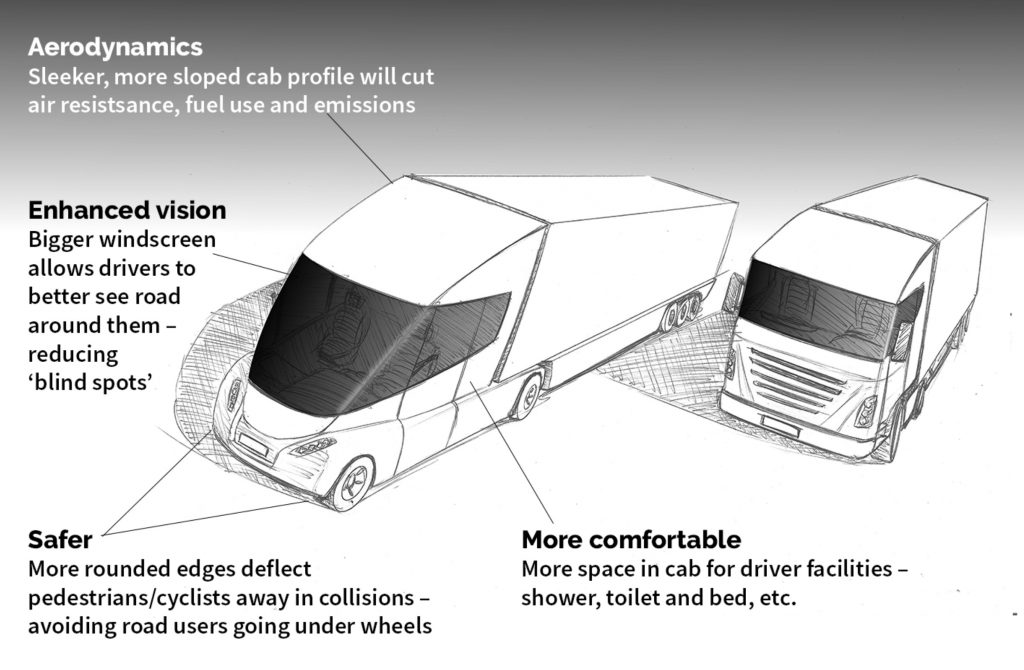Tesla Semi & Convoy Mode are a perfect fit for EU Commission’s updated mobility strategy
The Tesla Semi and its convoy mode could gain a foothold in Europe after the EU Commission published its plans to promote sustainable and intelligent transport options in the region. The EU Commission published its strategy for sustainable and intelligent mobility last week.
The strategy focused on three key factors: sustainability, intelligent mobility and resilience. It contained goals for the car industry, but also prominently discussed the CO2 neutrality of public transport and heavy-duty vehicles.
Emission-free trucks and the Tesla Semi
The EU Commission plans to have at least 30 million emission-free cars and 80,000 climate-neutral trucks or heavy trucks like the Tesla Semi in operation by 2030. A revision of CO2 standards for cars and vans in Europe is proposed by June 2021 and revision of carbon standards for heavy duty vehicles by 2022.
The EU Commission’s plans for emission-free trucks put the Tesla Semi in an advantageous position. The Tesla Semi is not only climate neutral, it also complies with the EU Parliament’s truck manufacturing law.
(Credit: European Federation for Transport and Environment)
Last year, the EU Parliament voted for a law requiring manufacturers of heavy-duty vehicles to produce more aerodynamic and energy-efficient trucks. The legal requirements provide for a truck with 80-90 cm long cabs and larger windshields for a better view of the road. The European Federation for Transport and the Environment published an illustration of the EU Parliament’s ideal heavy-duty vehicle design, which was very similar to the Tesla Semi.
The game for Tesla seems to have been determined between the EU Commission and the EU Parliament. The Libra seems to be more in favor of Tesla and the Semi when the Commission’s Smart Mobility plan comes into play.
Tesla Semis convoy mode in Europe
With regard to intelligent mobility, the EU Commission would like to proactively create favorable conditions for the development of new technologies. The Commission even stated that it would “provide all the necessary legal instruments for its purposes [new technologies’] Validation. “
Support for autonomous vehicles is explicitly mentioned in the EU Commission’s strategy, which gives the Tesla Semi another advantage in the European heavy-duty vehicle industry. Tesla’s advanced driver assistance software, Full Self-Driving, has been given some restrictions in Europe. However, this may change in the future.
Tesla’s autonomous software development will definitely make it to the semi, and a special feature could be a gamer-changer in industrial convoy mode. Back in 2017, when Tesla presented the Semi, Elon Musk announced that the company’s class 8 truck was already capable of convoy mode, which would allow several Semis in the immediate vicinity to draw semi-autonomously. Since then, Tesla’s FSD and Autopilot software have seen significant improvements, suggesting that Convoy Mode has only improved.
Trucking veteran Sean Chenault was impressed with the features of the Semi and was particularly impressed with the Convoy Mode. “With autonomous vehicles, you don’t have to pay a driver or worry about hours of service,” he said. The trucking industry has recently faced a shortage of drivers mainly due to safety concerns. Features like convoy mode were a possible solution to address the driver shortage.
The place of the Tesla Semi in the EU future
Chenault said the Semi is “a good thing for the trucking industry as a whole”. And it could also be good for the EU Commission’s strategy for sustainable and intelligent mobility, especially when it comes to trucks.
Tesla’s business as a maker of electric cars would definitely benefit from the EU Commission’s new strategy. Tesla has already gained more ground in Europe over the years with the Tesla Model 3. Next year, Tesla in Europe could be another big year with Giga Berlin and the release of the Model Y in the region. With the semi in the picture, Tesla could establish itself as an important player in the region’s transport sector.



Comments are closed.